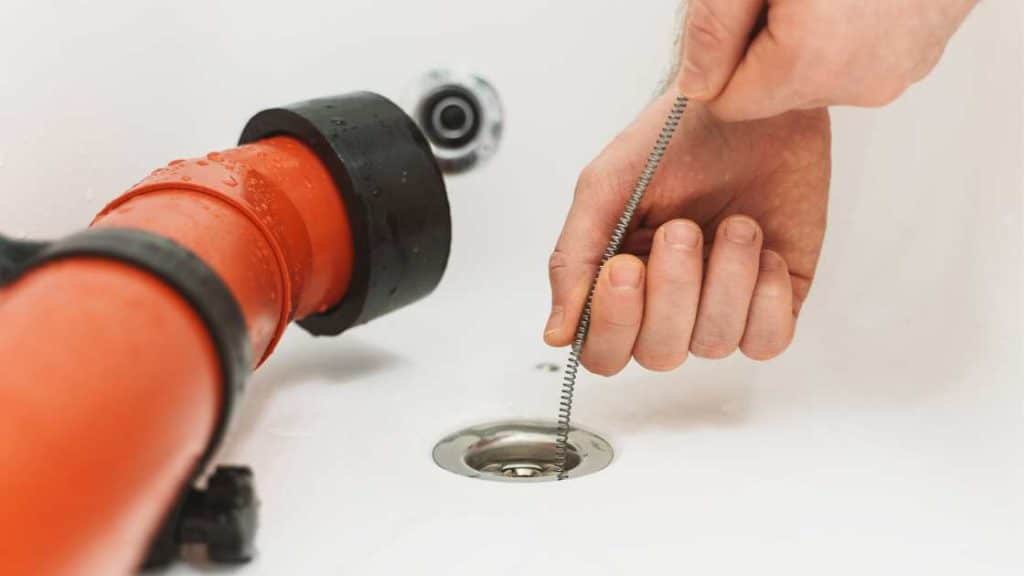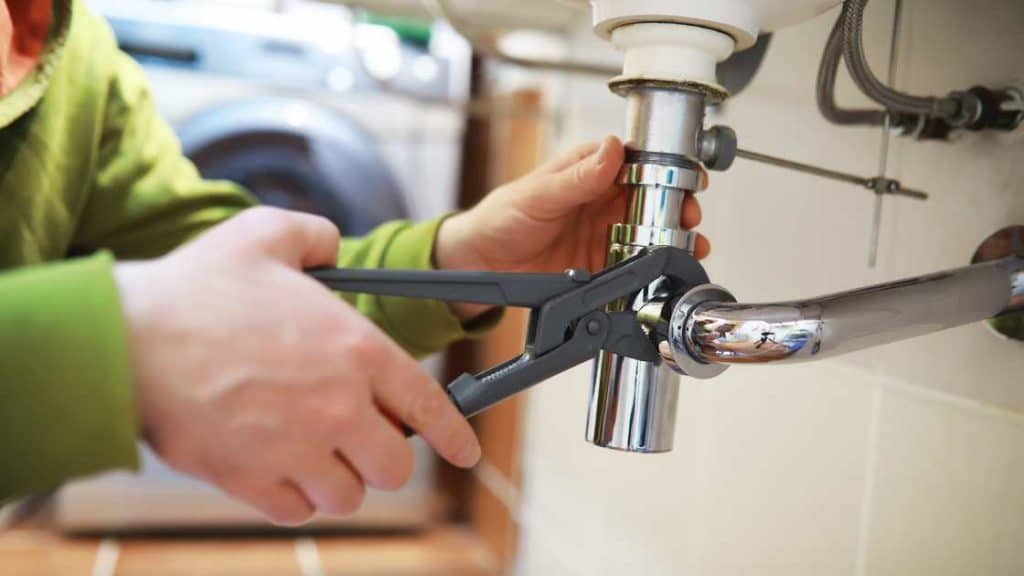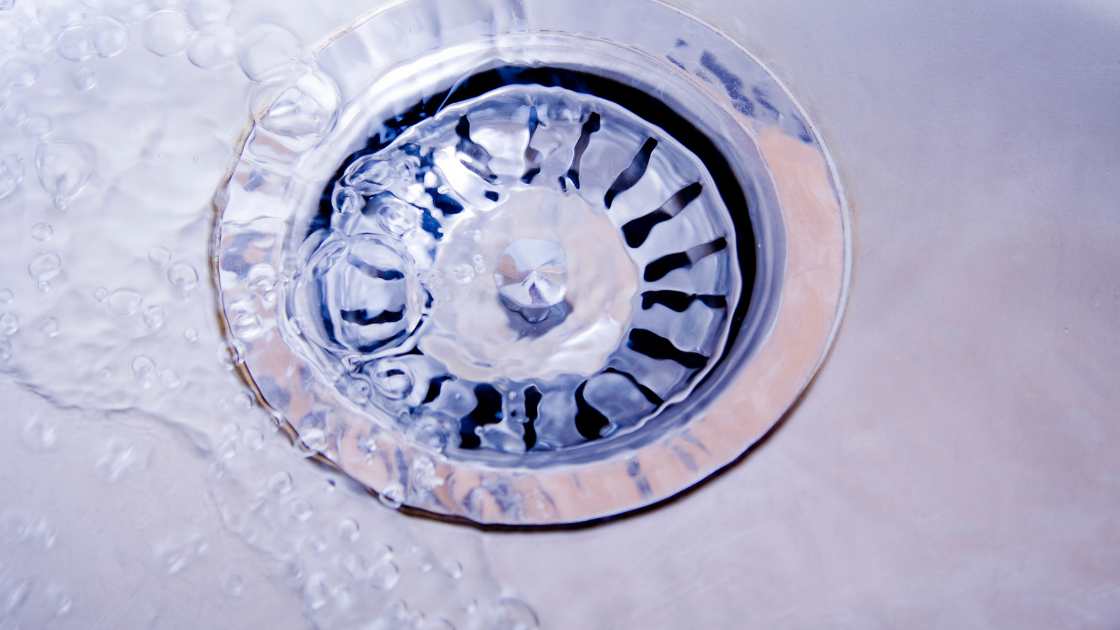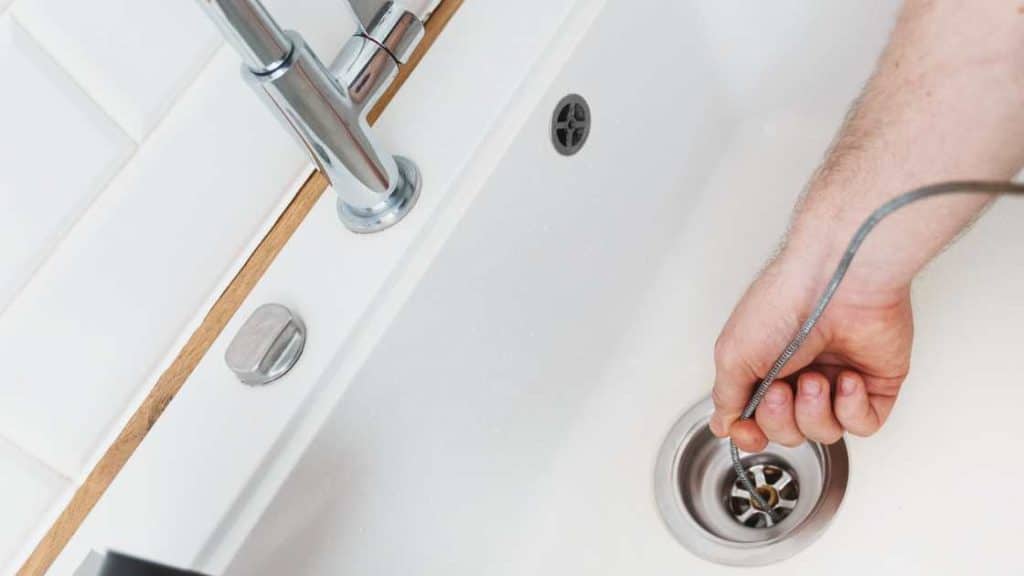Do You know “How to Get a Drain Snake around a Corner?”
To get a drain snake around a corner, guide it slowly while rotating the handle clockwise. Apply gentle pressure to advance the snake through the bend.
Unclogging a blocked pipe, especially when it involves negotiating a tricky corner, can be quite a challenge. Having the right tool for the job is essential, and a drain snake, also known as a plumber’s snake or drain auger, is a go-to solution for many.
Designed to dislodge blockages deep within pipes, successfully maneuvering a drain snake requires a blend of technique and patience. A common stumbling block is the corner within the drain, a spot where clogs often occur.
Mastering the knack for getting around these turns can save considerable time and frustration. This article aims to simplify the process of using a drain snake effectively, ensuring your drains are cleared with minimal hassle.
Introduction To Drain Snakes

Navigating a drain snake through the tricky bends of a pipe requires finesse and technique. Mastering the twist-and-push method can help ease the tool around corners, clearing blockages effectively.
A drain snake, often known as a plumber’s snake, twists through pipes. It removes clogs. A drain snake bends to navigate pipes. It is a DIY solution for blocked drains.
Drain Snakes And Their Uses
Drain snakes come in a coil. They have a handle. One turns the handle. The snake moves down the pipe. It breaks up or retrieves clogs. Professionals and homeowners use them.
- Break apart obstructions: The coil can cut through clogs.
- Retrieve debris: Pull clogs out of drains.
- Navigate bends: Flexibility allows corner turning.
Different Types Of Drain Snakes For Various Applications
| Type | Use | Best For |
|---|---|---|
| Hand Augers | Small, easy-to-use tools | Sinks, tubs |
| Closet Augers | Specifically designed | Toilets |
| Drum Augers | Heavy-duty cleaning | Main lines |
| Sectional Cable Machines | Professional cleaning | Long pipes |
The Challenge Of Corners In Drainage Pipes
Tackling the twists and turns of drainage pipes can be frustrating. Understanding how to navigate corners with a drain snake is crucial for unclogging blocked pipes effectively. But why are corners such a tough hurdle? Let’s dive into the mechanics of maneuvering a drain snake around those tricky bends.
Why Corners Pose A Problem For Drain Snaking
Corners disrupt the flow and motion of a drain snake. It’s like threading a needle without a steady hand. Without the right technique, the snake can coil, kink, or even damage the pipe. Knowing the right approach ensures the snake glides around bends smoothly, reaching the blockage without a hitch.
- Increased Resistance
- Potential for Pipe Damage
- Difficulty in Navigation
Identifying Common Corner Configurations In Plumbing
Pipes aren’t just straight shots; they have a variety of corner configurations. Recognizing these patterns can make the snaking process less daunting.
| Type of Corner | Description | Snaking Difficulty Level |
|---|---|---|
| Sweep Elbows | Long, gentle curves | Moderate |
| Ninety-Degree Elbows | Sharp right angles | High |
| Sanitary Tees | T-shaped fixtures for joining pipes | Variable |
Preparation: Before You Begin Snaking
The success of unclogging a drain often hinges on preparation. Getting a drain snake around a corner requires not just skill but the right approach. Preparation is vital when setting out to tackle a blockage. In this guide, we’ll walk you through each preparatory step.
Gathering The Necessary Tools For The Task
Begin with assembling all the tools you’ll need. A successful unclog is about working smart. List the tools and have them within arm’s reach:
- Drain snake or auger
- Work gloves
- Bucket
- Rags or towels
- Flashlight
Safety Measures And Protective Gear
Prioritize safety before confronting a clogged drain. Protect yourself with the right gear:
- Wear gloves: Gloves will protect your hands from sharp objects and germs.
- Eye protection: Goggles guard against splashes and debris.
- Appropriate clothing: Wear clothes that you don’t mind getting dirty.
Remember to work in a well-ventilated area to avoid inhaling fumes. Cleanliness and safety are your allies in this task.
The Mechanics Of A Drain Snake

Drain snakes, also known as plumbing augers, are essential tools for tackling stubborn clogs in pipes. These flexible and slender devices navigate through the twists and turns of plumbing with ease. Their design allows them to push past blockages with precision.
Mastering the use of a drain snake involves its structure and the method of maneuvering through the plumbing maze.
How A Drain Snake Maneuvers Through Pipes
A drain snake features a coiled spiral head at its leading end, which is the primary tool for dislodging clogs. The handle or crank on the other end provides control over the snake. When you turn the crank, the coil rotates and moves forward. This movement is key to steering the snake around corners and deeper into the pipe.
- Insert the head into the drain opening.
- Turn the handle to advance the coil.
- Apply steady pressure as you push the snake further.
- Feeling resistance often indicates a corner or clog.
- Continue turning and apply a gentle push-and-pull motion to navigate bends.
Adjusting The Tension In The Cable
The tension of the cable is a critical aspect of using a drain snake effectively. Too much tension could lead to damage in the pipes, while too little might result in the snake being ineffective. Adjust the tension by controlling the pressure you apply through the handle.
- Twist the handle gently for slight resistance.
- Increase tension by turning the handle more.
- On encountering a corner, ease off the tension.
- Use short, pumping motions to ease the snake around.
- Restore tension after the snake bends to continue moving.
Step-by-step Guide To Snaking Around Corners
Dealing with a clogged drain can be tough, especially when you need to navigate bends and corners. This step-by-step guide will help you expertly snake around corners, clearing blockages with ease.
Feeding The Snake Into The Drain
Begin by preparing your area and gathering your tools. Make sure your drain snake is at hand.
- Position the drain snake close to the drain entrance.
- Pull out a small section of the cable.
- Gently feed the cable into the drain, without forcing it in.
Proceed slowly until you feel resistance, indicating a corner or blockage.
Techniques For Easing The Snake Past A Corner
- Rotate the handle in a clockwise direction as you push forward.
- When resistance increases, ease up on the pressure you’re applying.
- Apply slight in-and-out movements to help navigate the curve.
- If the snake remains stuck, retrieve it partially, then try again with more rotation.
- Listen for scraping sounds, which mean the snake is moving past the corner.
Continue the process until the snake moves freely, indicating a successful pass around the corner.
Tips For Dealing With Stubborn Corners

Unclogging a drain can often hit a snag when the snake meets a stubborn corner. Mastering the turn is necessary for a successful plumbing job. Here, discover some fail-safe tips that can help you maneuver through tough angles with ease.
Using A Guide Hose To Navigate Tight Bends
When confronting a challenging curve in your pipes, a guide hose acts as a trusted ally. It protects the pipe walls and guides the snake. Here’s how to utilize a guide hose effectively:
- Insert the hose into the drain before the snake.
- Ensure the hose is firm yet flexible enough to bend.
- Feed the snake through the hose to reach the corner.
- Keep the hose close to the entry point to avoid slippage.
The Art Of Wiggling And Rotating The Snake
Sometimes, the secret to success lies in the movement. Wiggling and rotating the drain snake can ease its journey around tight corners. Follow these steps:
- Keep the handle of the snake close to the drain entrance.
- Gently wiggle the snake as it nears the corner.
- While applying light pressure, rotate the handle clockwise.
- Feel for resistance easing up, indicating successful navigation.
Remember, patience and gentle maneuvers work far better than forced actions which might lead to pipe damage.
Troubleshooting Common Problems
Clearing a blockage in your pipes with a drain snake can be straightforward until you hit a corner.
Pipes are not always a straight shot, and those bends can pose challenges. Knowing how to maneuver the snake around bends and corners is essential for effective drain clearing.
Let’s work through common problems and their solutions when snaking through these tricky areas.
What To Do When The Snake Won’t Turn
Encountering resistance when turning the snake is common. Don’t force it. Apply gentle pressure instead. Follow these steps:
- Withdraw slightly – Pull back the snake a few inches.
- Rotate – Gently spin the snake while pushing forward.
- Probe gently – Feel for the path of least resistance.
- Continue slowly – Advance the snake as it turns the corner.
If the snake still won’t turn, it might be hitting a blockage or a tight elbow in the plumbing.
Clearing The Clog After Navigating The Corner
Once past the bend, focus on reaching and clearing the clog. Use consistent, light pressure while you:
- Push and pull – Maneuver the snake back and forth to break up the clog.
- Rotate the handle – Spin it to catch the debris.
- Extract carefully – Pull out the snake when resistance lessens.
Clean the snake’s head upon removal. Run water to check for smooth flow.
Aftercare And Maintenance Of Drain Snakes
Expertly navigating a drain snake around sharp corners marks the beginning of unclogging your drain. But, it’s the aftercare and maintenance of your plumbing tools that determines their longevity and effectiveness for future use. Here are essential tips to ensure your drain snake remains in peak condition.
Cleaning And Storing Your Drain Snake Properly

Care for your drain snake starts immediately after use. Begin by wearing gloves to protect your hands. Extend the snake completely and rinse it with warm water. For stubborn debris, a mix of water and mild detergent proves effective. Rinse thoroughly, pat dry with a cloth, and leave it to air dry before storing.
Avoid moisture when storing to prevent rust. Hang the snake or coil it loosely. Ensure the storage space is clean and dry. This prevents the snake from coiling stiffness and retains its flexibility.
Use the following checklist for proper cleansing and storage:
- Extend and inspect the entire length.
- Clean with water and mild detergent if necessary.
- Dry thoroughly before storing.
- Store in a dry environment to prevent rust.
Regular Maintenance To Keep Your Snake In Good Condition
Just like any tool, a drain snake requires regular check-ups and care. Look for signs of wear or damage. Pay special attention to the integrity of the coil and the functionality of the handle. Lubricating moving parts with WD-40 or similar lubricants can help maintain smooth operation. Replace parts if signs of damage appear.
Maintain a schedule for these checks to ensure enduring performance. Here’s a handy guide:
| Part | Check for | Maintenance Action |
|---|---|---|
| Coil | Wear, kinks, rust | Clean, straighten, lubricate |
| Handle | Loose parts, functionality | Tighten, lubricate, replace if needed |
Remember, a well-maintained tool is a reliable tool in any plumber’s arsenal. Give your drain snake the care it deserves, and it will stay ready for those unexpected clogs with the corner-turning skill of a pro.
Alternative Tools And Techniques
Encountering a clogged drain can be frustrating, especially when it involves navigating around tight corners. Traditional methods might not always work. This is when knowing the right tools and techniques can turn a headache into a quick fix.
When To Consider Using A Plumbing Auger
A plumbing auger, often called a drain snake, is the go-to tool for professionals and DIY enthusiasts alike. Reach for an auger when:
- Plungers fail to clear the blockage.
- Bendable metal cable is needed to navigate pipes.
- Deeper clogs exist beyond the trap.
Other Innovative Products For Difficult Drainage Systems
Innovative solutions have emerged to tackle the most stubborn drain twists:
| Product | Use Case |
|---|---|
| FlexiSnake | Grabs hair clogs with hook-and-loop technology. |
| Zip-it Tool | Single-use tool ideal for clearing sink and tub drains. |
| Drain Weasel | Detachable wands catch hair and debris in showers and sinks. |
For bends and elbows in your pipes, these tools can often provide a solution where a standard drain snake might struggle.
Professional Assistance Vs. Diy
Navigating a drain snake around a corner can test a homeowner’s patience and skill. The question often arises: should you handle the task personally or call a professional plumber? This section explores the nuances between seeking professional assistance and maintain yourself spirit for unclogging drains effectively.
Assessing When To Call A Professional Plumber
Confronting a tricky bend in your plumbing system might mean it’s time for expertise. Professional plumbers bring specialized tools and years of experience to ensure your pipes are clear without causing damage. If you notice recurring clogs, water backing up, or you’re unable to advance the snake past a certain point, these are clear signs you need a professional’s touch.
- Recurring blockages hint at deeper issues
- Tools like motorized drain augers are professional-grade
- Error-free unclogging preserves pipe integrity
Cost-benefit Analysis Of Diy Vs. Professional Services
Contrasting DIY efforts with professional services involves evaluating time, cost, and potential risk. While saving money might tempt homeowners to attempt a fix, incorrect use of a drain snake can lead to pipe damage or incomplete removal of the blockage.
| Aspect | DIY | Professional |
|---|---|---|
| Cost | Lower upfront, potential for added expenses | Higher upfront, typically includes guarantee |
| Time | Varies based on skill, could be extensive | Less, plumber efficiency |
| Risk | Possible pipe damage, might not solve problem | Low, due to professional expertise |
- Evaluate immediate and long-term costs
- Consider the value of your time investment
- Assess the risk to your plumbing system
Frequently Asked Questions On How To Get A Drain Snake Around A Corner
Can A Drain Snake Navigate Pipe Corners?
Yes, a drain snake can navigate through pipe corners. The technique involves inserting it slowly, applying steady pressure, and twisting the handle when you feel resistance. This helps the snake bend around the corner.
What Type Of Drain Snake For Turning Corners?
For maneuvering around corners, use a flexible auger-style drain snake. They are designed to be more bendy, allowing easier navigation through pipe twists. Avoid using rigid snakes as they may not pass the corners efficiently.
How To Guide Drain Snake Through Tight Bends?
Guide the snake with a gentle pushing motion. When you reach a bend, rotate the handle slowly while applying steady forward pressure. It’s denotes to force it as that might cause the snake to coil back or damage the pipes.
Does The Size Of A Snake Affect Corner Navigation?
Yes, the snake’s size affects navigation. A smaller diameter snake is more flexible and better suited for negotiating tight curves and corners in pipes, while larger snakes may struggle with sharp bends.
Conclusion
Navigating a drain snake around a corner can seem challenging. With the right technique and patience, it’s doable. Remember, gentle twists and consistent pressure are key. By mastering this skill, you’ll tackle tough clogs efficiently. Happy plumbing and may your drains stay clear!

